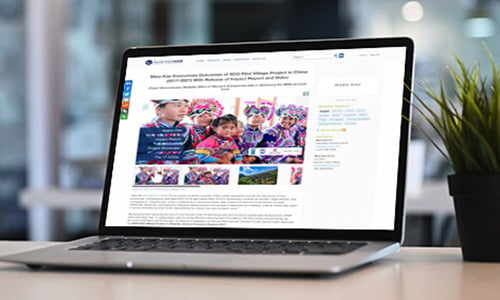Latino media outlets have become a mainstay in the United States, providing news, entertainment, and cultural programming tailored specifically for Spanish-speaking audiences. Learn key findings about Latino media, the audiences they reach, and how to build relationships with both.
Latino News Media in the United States
Latino news media in the United States plays a crucial role in shaping public discourse and serving as a vital source of information for the diverse Latino population. Several Spanish-language media outlets have established themselves as influential voices for audiences across the country. Television, radio stations, newspapers, and digital platforms contribute to the rich tapestry of Latino news media, offering a range of perspectives on local, national, and international events.
Like other news outlets, Latino news media covers a variety of topics. Issues that are particularly relevant to the Latino community include immigration policies, social justice, and education. Moreover, Latino news media often serves as a bridge between the mainstream media and the Latino population, offering nuanced coverage and cultural context that may be missing from broader outlets.
The State of the Latino News Media
In 2019, the Craig Newmark Graduate School of Journalism at the City University of New York (CUNY) published The State of the Latino News Media, a report that provided an initial snapshot of the Latino media ecosystem in the United States. Here are some findings:
- There are over 600 Latino news outlets reaching a potential audience of nearly 59 million people.
- Majority of Latino news outlets are small publications and are Latino-owned and independent.
- Newsroom staff are heavily Latino, and the outlets’ predominant language is Spanish.
- Regardless of size, Latino media outlets mainly cover local news.
Latino News Consumers in the United States
Latino news audiences in the United States are a diverse demographic. The term "Latino" encompasses people of various nationalities, including Mexican, Puerto Rican, Cuban, Dominican, and many others. Each group has a unique cultural, linguistic, and historical context. Tailoring news content to reflect this diversity is key to resonating with different Latino communities.
Family, community, and heritage hold immense significance for Latino audiences. News that addresses issues affecting these core values tends to be particularly resonant. Recognizing and authentically representing these concerns fosters a sense of trust and connection. Engaging with the community through culturally sensitive storytelling and representation builds credibility and loyalty among Latino news audiences.
Key Facts About U.S. Latinos
From Pew Research Center:
- The U.S. Hispanic population reached 63.6 million in 2022.
- Hispanics have played a major role in U.S. population growth over the past decade.
- Hispanics are the largest racial or ethnic group in California and Texas.
- Newborns, not immigrants, have driven the recent growth among U.S. Hispanics.
- The share of Latinos in the U.S. who speak English proficiently is growing.
- The share of U.S. Hispanics with college experience has increased since 2010.
- Four in five Latinos are U.S. citizens.
Pew also found that 33% of Hispanic news consumers in the U.S. prefer getting their news via television, 6% via radio, 4% via print publications, and 55% via digital devices which includes news websites or apps (18%), social media (20%), search (14%), and podcasts (3%).
Connecting with Latino News Media
Understand Cultural Sensitivities: Since Latino media is so diverse, it’s essential to understand and respect various cultures, languages, and traditions. Avoid making generalizations and take the time to learn about specific cultural nuances in the countries you are targeting.
Bilingual Communication: While not required, providing information in both English and Spanish (or the relevant local language) can broaden your reach. This demonstrates a commitment to engaging with the local audience and makes it easier for media outlets to use your content.
Establish Personal Relationships: Attend industry events, engage in networking opportunities, and build personal relationships with journalists and media professionals. Face-to-face interactions, when possible, can go a long way in establishing trust and credibility.
Tailor Your Content: Customize your press releases to fit the interests and preferences of the local audience. Highlight how your news or story is relevant to the specific community or region. Be mindful of local trends, issues, and cultural references to make your content more relatable.
Utilize Social Media: Social media is a powerful tool for connecting with Latino news media and their audiences. Engage with them through social media channels, share relevant content, and participate in discussions.
As the Latino population continues to grow and exert influence, Latino news media plays a pivotal role in fostering a sense of community, identity, and empowerment among its audience, contributing to the broader landscape of American journalism. Acknowledging and catering to the diverse needs and preferences of Latino audiences is integral for any successful news strategy.
|
Business Wire’s LatinoWire circuit helps you reach the U.S. Hispanic market with distribution in English and Spanish to print, broadcast, and online media. |
Learn more
Watch: The Latinx Media Landscape in 2023
The Evolution of Hispanic Media
6 Reasons to Connect with Latinx Audiences
International Media Relations Best Practices
Get the latest PR, IR, Marketing and Media tips on the Business Wire Blog. Subscribe today!





